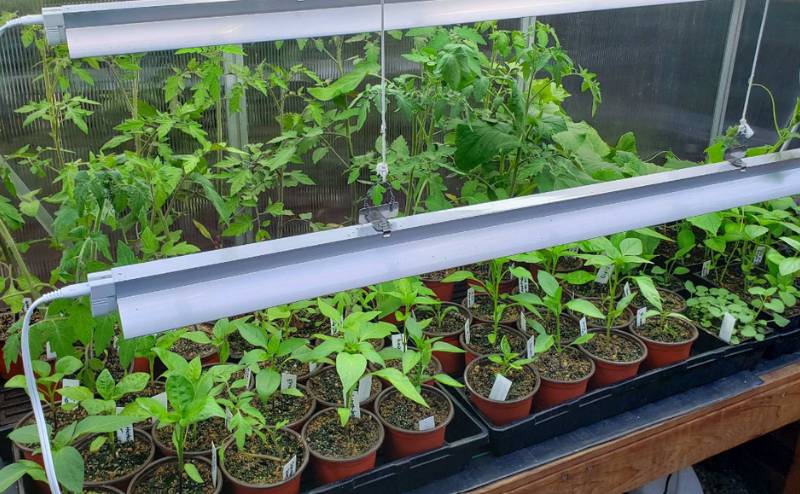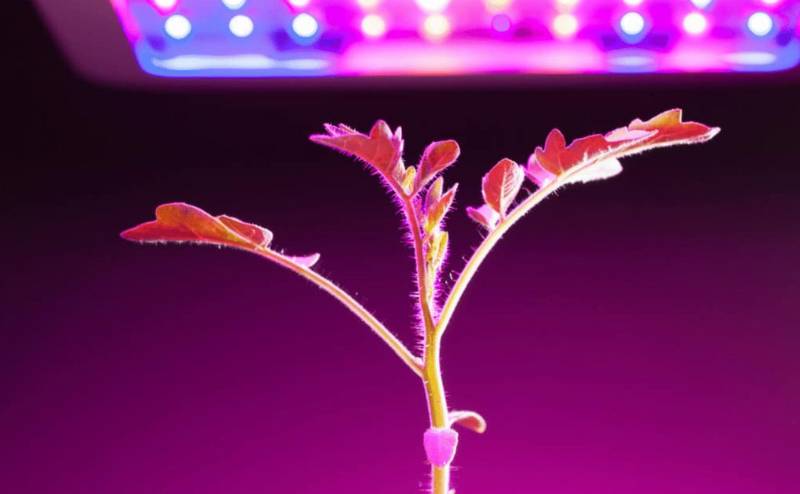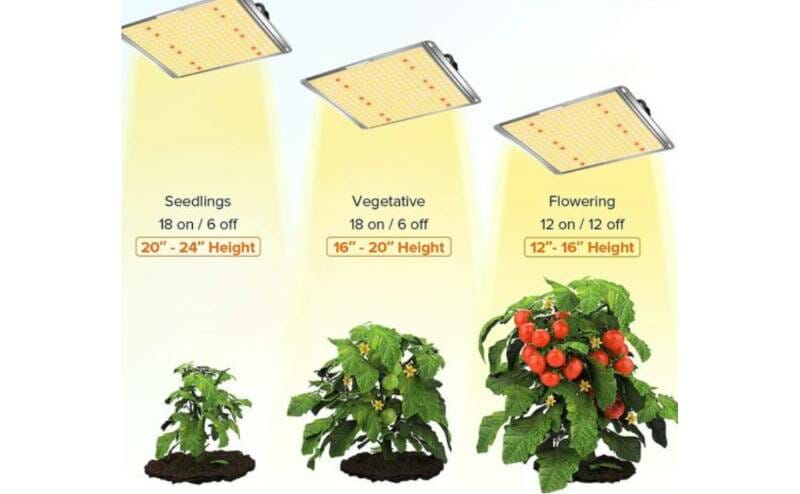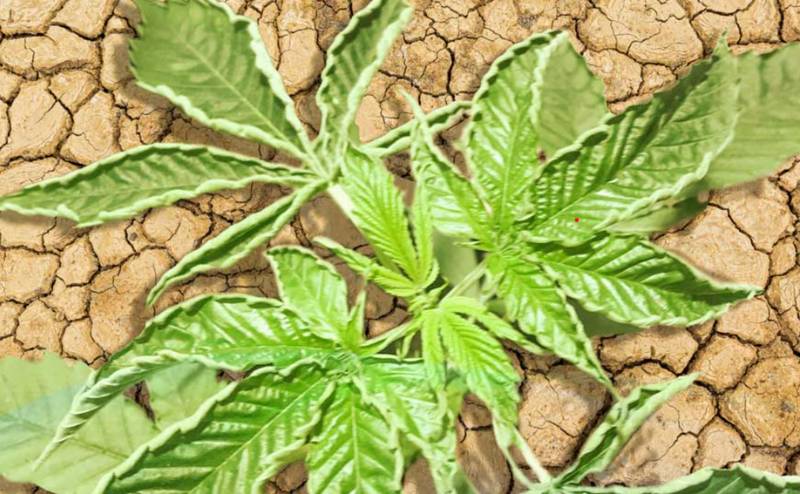Light is almost everything for a plant.
With the help of light, plant photosynthesizes to make food.
Growers optimize light cycles according to their need to increase the yield or fasten the growth process in mature plants.
But what if you have seedlings or baby plants and you provide 24 hours light?
Will 24 hours of lighting help them grow faster?
Or
Will it damage the when you are starting seeds?
We will be figuring this out in today’s guide. Dive deep into it with me and find out if the seedlings need 24 hours of light.
And what will be the impact if you provide it 24 hours of light exposure (even accidentally)?
Let’s find out:

Perfect Grow Light Length Of The Light-Dark Cycle And Impact On Plant Growth
Plants need light to make their food.
Therefore, plants can easily thrive if you provide lighting for around 8 to 16 hours, whether natural Light or artificial Lights (LED grow lights).
However, when growing plants indoors, seeds or seedlings need at least 6 hours of dark period a day to thrive better and grow better.
This same rule applies to any weed strain.
By providing the appropriate light time and darkness time, you will eventually help your seedlings grow faster.
On the other hand, exposing them to the grow light for more hours than they need can surely hamper their growth.
Therefore, when you set up grow light indoors or even growing outdoors, you must understand that a seedling must need at least 6 hours of darkness.
Hence, you can keep the light-dark cycle according to it.
On the other hand, if you use artificial Lights such as LED grow Light, you need to use the timer to provide the right light exposure.
If you do not want to do things manually, you can set the timer on your LED grow lights. Nowadays, most LED grow lights come with a timer feature.
Or, even you can remotely control the light setup to turn it on or off.
Above all, remember that the seedling stage is very sensitive for a plant; therefore, you need to provide it with the right amount of light to help it become a healthier mature plant.
It is also true that different kinds of plants need light exposure differently. Therefore, depending on the plant type, you must also do your homework about the light length of a seedling.
If you provide light exposure in the right amount, you will observe quick and sharp growth in your plant.
Advantages And Disadvantages Of Putting Lights On For 24 Hours On Plants
Let’s have a quick look at the advantages and disadvantages of keeping lights on for 24 hours:
Advantage:
Well, there is only one major advantage of running your lights on 24/7.
If your plants are not getting enough light, providing them with more lighting is the solution.
However, even expert growers believe that this is not the right solution. If your weed plants need more light, then providing more light fixtures is the right step that you should take.
Or you can swap your old grow lights with the new, more powerful light setup. In short, always leaving your lights on is not a good idea.
However, some growers put their plants in 24/7 lighting during vegging for faster growth. And this even works sometimes.
You will observe that your plants produce buds much sooner, but this advantage is outweighed by the disadvantages, which we will examine further.
Moreover, putting lights on around the clock during the flowering phase is not an option. Therefore, your plants will not switch to flowering until you reduce the lights to 12 hours a day.
Additionally, LED lights working 24/7 can also be a reason for fire hazards due to excess heat or temperature, which is another issue. Still, it only happens with cheap-quality lights.
So, overall, there are more disadvantages to putting lights on for 24 hours. If you only need to put your plants from flowering to the veg stage, then only you should think about it.
Otherwise, there is no major benefit.
Disadvantages:
There are a lot of disadvantages to putting grow lights on for 24 hours a day over the plants. Let’s have a look at each of them:
- Decrease In Plant’s Health
Leaving the lights on all the time can surely help your plant’s growth, but eventually, doing so for many days will weaken the plants.
The plants will become more susceptible to diseases and ultimately become weak.
This scenario can be best understood with this example.
Imagine you are waking up all night to get more work done. You do it for a few days and get more work done easily.
But when you do it continuously for more days, you will find that, eventually, you are getting weak. And rather than an increase in productivity, there is a decline in health and work productivity.
That means you need to sleep or take a rest.
Similarly, it implies to the plants. If you keep them feeding the lights and give them no time for rest, they will become weak after a few days.
During the day, plants photosynthesize to convert CO2 and the Light from the sun to make their food, thus releasing oxygen.
However, during this whole process, plants respire a little. Therefore, plants halt their food-making process (photosynthesis) at night and focus solely on respiring.
And it is needed for them to grow properly.
Therefore, it becomes very important for a plant to rest at night. Hence, it becomes a disadvantage for the plant to get lights on 24 hours a day.
- Extra Cost
Obviously, the more you run your light, the more it will show numbers on your electricity bill.
The sole cost of running grow lights for 24 hours will be combined with the other equipment you run in the growing area, like fans and conditioners, which are essential to run with the lights.
It also pressures the other equipment to run along with the light setup and provide optimal output, leading to a shorter lifespan.
For instance, the carbon filter you may use with the fan system will be used more if you run lights and fans for 24 hours.
- More Heat Production
Lights produce heat. And therefore, you need to run fans and other cooling equipment to optimize the grow room temperature.
You also need to be more aware of the light setup and check them frequently because there are more chances for fire hazards due to excessive heat production.
And it is very common with growers to have fire issues with the light setup, and running them for 24 hours increases more concerns of growers.
What Happens When Plants Are Exposed To Light?

When plants are exposed to light, they use the CO2 along with this lighting to make food through the process known as photosynthesis.
However, during the vegetative phase, growers may put lights on for 24 hours, but to return to the flowering stage, plants also need a dark period.
Therefore, along with the different growth stages of the plant, you need to provide and keep shifting the light cycles, but a grower never recommends keeping lights running on around the clock.
The main purpose of exposing plants to light 24 hours a day is to increase the speed of growth or yield during the vegetative phase.
However, if you are unaware of how these shifting works, you should always follow the ideal light exposure schedule to avoid harming your indoor garden.
The Ideal Amount Of Light Exposure To The Plants
According to expert growers, in most cases, the ideal light exposure time for a plant should be from 16 to 18 hours for indoor plants that receive no outdoor lights.
However, even 12 to 14 hours a day of Light exposure should also be adequate for the plants to thrive, but it all depends on the plant type you are growing along with the growth stage of that plant.
Therefore, doesn’t matter whether you are starting seeds indoors or outdoors; you need to provide at least near-to-ideal light output for more yield and better plant health.
Additionally, providing lights at the same time as plants receiving window light is much better.
Furthermore, 20 to 40 moles of light per day is ideal for cannabis plants, including vegetable-bearing plants.
For instance, if your plants are in the vegetative phase, then you can provide 18 hours of Light cycle to give 20 moles of Light by LED grow light having a PPFD value of 308 micromoles(umol) of light.
However, at the same time, in the flowering phase, to produce 20 moles of light, you will need a higher PPFD value of 462 umol due to shortened 12 hours of Light cycle.
If you want to maximize the cannabis plants’ yield, you will not produce 40 umoles of light per day for the plants, which you can achieve with a minimum PPFD value of 617 umols for 18 hours.
This same amount of light (40 moles) will need 926 moles of PPFD value to compensate for the shorter 12-hour Light life cycle.
Factors Upon Which You Should Rely For Leaving Your Grow Lights On

So after knowing everything about the importance of light schedule and other factors, you must be wondering how you should decide how many hours lights should be on.
Or on which factors you can decide the light schedule.
Here are some factors which you should consider while you calculate the light schedule for your plants:
Types Of Plants
When you are growing plants, you should know about their type. There are mainly three types of plants that growers grow:
- Low-light plants
- Medium-light plants
- High light plants
You can observe which type of plant it is from the seed box.
As the name suggests, low-light plants require fewer hours of Light running. Therefore, low-light plants should get about 4 hours of artificial light.
However, medium-light plants need slightly more than the low-light type, usually around 6 hours.
Above all, the high light plants need the light hour more than the above two options, and they need 14 to 16 hours of light.
Also, light and dark cycles depend on the growing stage as well.
For instance, different growth stage requires a different amount of time; therefore, despite the type of plant, the light required amount can vary depending on the growth stage.
The best example is the vegetative stage of plants. Under this phase, plants need more light to sustain growth.
But at the same time, the plants should rest for at least 6 hours. Therefore, the light cycle for the veg stage is 18 hours of light and 6 hours of dark time.
If you provide 24 hours of light exposure, your plants will not grow appropriately.
Similarly, for the flowering stage, the cycle of 12 hours of lights on and 12 hours of lights off goes perfectly. It will help your plants to grow perfectly.
Type Of Grow Lights Used
As you use an artificial light setup to provide a natural sunlight-like environment, the light schedule also depends on your grow light.
LED Grow Lights
Currently, LED grow lights are the best. They provide almost all types of wavelengths in the output, which is needed for the plants to grow through different stages.
Additionally, LED grow lights consume less power and still produce higher output, which is a plus point for growers.
So depending on how much wattage your LED lights consume to produce the required output, you can keep lights on and off in different plant growth stages.
Regular Grow Light Bulbs
Unlike LED grow lights, regular grow lights are not long-lasting but can do the job. They are also light energy efficient so that you can save some money on your electricity bill.
Additionally, regular Light bulbs are inexpensive; therefore, even a budget grower can afford them.
However, it is not recommended to use regular bulbs for plant cultivation, but if you are still using them, you need to optimize the light scheduling time for better output from your garden.
HID Or High-Intensity Discharge Lights
Comparatively less powerful than LED lights but useful grow lights for budget growers, HID lights are the best option for growers with tight budgets.
However, they are more prone to heat, so you cannot keep them on for longer hours.
So you need to keep the light schedule to its capacity to get the most out of it.
Similarly, many other varieties with a huge selection of grow lights are available such as fluorescent and metal halide lights.
You need to relate and optimize the Light cycle according to light type.
Different growth stages of the plant will also impact the light cycle simultaneously.
Temperature And Humidity
The temperature range in an optimal growing environment should be around 72 to 82 degrees Fahrenheit, while the RH (relative humidity) should be around 30-40%.
However, these factors can be affected by using light for longer hours. Therefore, consider this factor while calculating your plants’ light cycle.
If the temperature of your grow space increases, it can harm the plants you need to avoid the most.
Grow Space Size
Illuminating your whole grow space requires the calculation of wattage.
You can do it by reading how to calculate wattage for grow light.
Generally, for a 3 x 3 grow area, around 300 watts of light, and for 4 x 4, around 500 watts of light should work.
But I recommend calculating it on your own, considering the number of plants you want to put in and also keeping other factors in mind when calculating it.
Perfect Height To Put Your Grow Lights On Your Plants

As I said earlier, the excess light can cause a Light burn or heat stress to your seedling or plants.
However, apart from having a strong light, keeping your grow light too close to the plant is one of the major reasons for heat or light stress.
Therefore, it becomes essential that you set up your lights at an appropriate distance from the plants.
Generally, 12 inches above your plants is the usual height, but you can adjust it according to your grow tent or room.
Ultimately keep in mind that you need to avoid the Light burn or issue just because you have kept grow lights too close to the plants.
Symptoms When Your Plants Are Getting Less Light

There can be multiple signs that a plant is begging for light exposure.
One of the most common symptoms is observing a stunted growth of the plant. That means your plant is visibly taller towards the light.
Additionally, there could be a symptom, including plant leaves not having vivid color.
So if you observe any of these symptoms, you need to check if you are giving your plants sufficient light and if you are not, then provide it accordingly.
What If I Accidently Put My Grow Lights On For 24 Hours?
Leaving your grow lights on for 24 hours accidentally does not cause harm for a day or two in the veg stage.
However, if you keep doing the same intentionally or unintentionally, then it may cause harm to your plants.
It is one of the mistakes that growers often do. Sometimes they forget to set the timer, or the light remains on for 24 hours due to a malfunction.
But you must understand they will be fine if the plants are vegetative. However, it is not recommended to keep your plants under 24 hours of lighting, but it won’t kill your plants.
Well, this condition implies the vegetative growth stage only.
If your plants are in the flowering stage, then 24 hours of lighting can be a problem. Weed plants are quite sensitive to photoperiods during the flowering stage.
In the flowering stage, providing more than 12 hours of Light causes the plant to re-enter the vegetative phase.
Therefore, you must avoid keeping lights on for 24 hours during the flowering stage.
What If 18 Hours Of Light Is Not Working For My Plants?
Still, don’t fall for the 24 hours of lighting.
The plants can accept most of the lighting, but excess due to the longer hours of lighting can harm them as it may cause a Light burn or heat stress.
If even 18 hours of light is not working for the plants, you can try shifting to a stronger grow light. However, a stronger grow light should work a few hours but should do most of the job.
The perfect example can be if you are using regular bulbs as the grow lights and even after running them for 18 hours is not working for you, then you can shift to the stronger LED grow lights, which are a much better option than that regular bulbs.
FAQs About LED Grow Lights On For 24 Hours
How many hours of light do seedlings need?
Typically, 16 to 18 hours of light is a healthy light cycle for a plant to grow healthier. However, 12 hours of lighting can also be sufficient, depending on your plant type.
What happens if you give a plant 24 hours of light?
If a plant receives lights too much or 24 hours of light, it may damage its leaves. For example, you may observe Light burn or dead patches on leaves and leaves turning yellow.
Are LED lights too strong for seedlings?
LED grow lights should be strong for healthy plant growth and better yield, but if you put a strong LED grow light too close to the seedlings, it can also damage them.
Therefore, you need to keep the LED grow lights at an appropriate distance from them. Also, seedlings need some dark periods as well to thrive.
Can LED lights burn seedlings?
LED grow lights are made to push the seedling growth and not harm it. However, if you mistakenly put the grow lights too near the seedlings, you can surely observe Light burn.
How do I know if my seedlings are getting too much light?
When your seedlings or plants get excessive light, they will show physical symptoms, which you need to observe and take action quickly.
You might observe leaves getting droop or a change in the natural color of their leaves. Also, sometimes you can observe pale or brown spots on leaves.
However, some leaves can also turn yellow even if the veins are green. In short, the plant will look unhealthy when you expose it to excess light
Leave Grow Lights For 24 Hours: Conclusion
Depending upon the seedlings type, you can provide between 12 hours of lighting and 16-18 hours of light.
However, it is not needed for seedlings to get 24 hours of light exposure as too much light can lead to Light burn and other issues which can hamper the overall growth of the plant.
Therefore, you must understand the plant type you are growing and thus provide it appropriate light cycle, which is necessary for healthy growth.
Sometimes growers provide too much lighting to boost the yield, but unless you have experience, you should not opt for this method.
Seedlings can grow faster and better, thus becoming healthy plants with only a balanced amount of light and dark periods.
Providing only Light excessively can damage the plant instead of helping it grow faster.
Therefore, do your homework and calculate the right amount of time for light exposure that your baby plants need.
